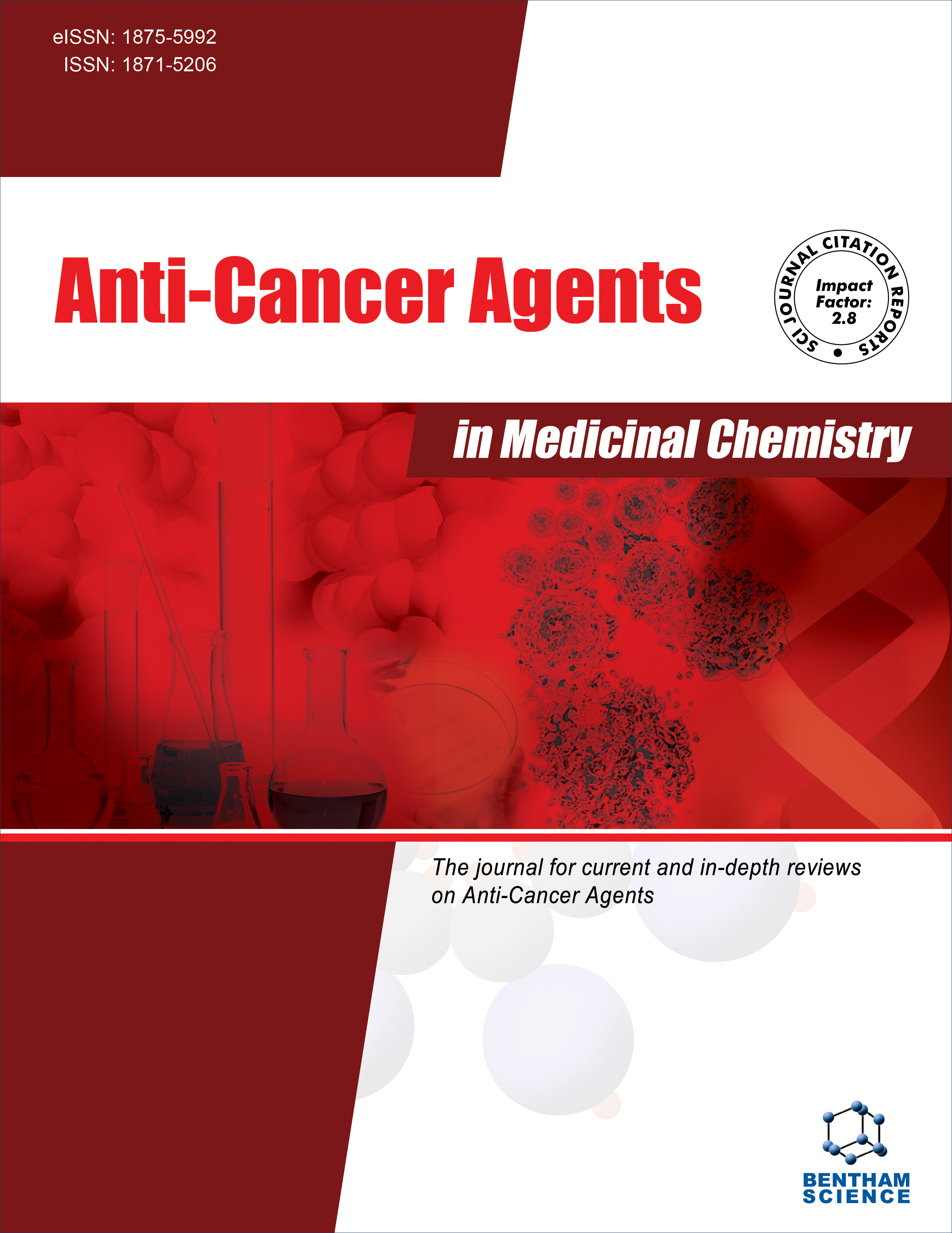-
oa Editorial [Hot Topic: SOD Enzymes and Their Mimics in Cancer:Pro- vs Anti-Oxidative Mode of Action-Part II (Guest Editor: Ines Batinic-Haberle)]
- Source: Anti-Cancer Agents in Medicinal Chemistry (Formerly Current Medicinal Chemistry - Anti-Cancer Agents), Volume 11, Issue 4, May 2011, p. 327 - 328
-
- 01 May 2011
- Previous Article
- Table of Contents
- Next Article
Abstract
As a continuation of Part I, herein Garry Buettner [1] addressed the critical role of manganese superoxide dismutase, MnSOD - the enzyme that we cannot live without. MnSOD is a central player in the redox biology of cells and tissues [1]. It is critical for establishing the appropriate balance in redox circuitry of the mitochondria. Thus, there has been an increasing demand to develop powerful SOD mimics. In the studies where MnSOD was overexpressed, the increased levels of H2O2 were found, which suggests that H2O2 has a major role in metastases. The loss of MnSOD is likely an early event in tumor progression allowing for further propagation of the tumorigenic phenotype resulting from the steady state increases in free radical production [2]. Garry Buettner contribution, and manuscripts by Irwin Fridovich [3] and Lee Ann MacMillan Crow and John Crow [4], as well as from Melendez [2] and St. Clair [5] groups addressed the possible, and still controversial origin of the increased peroxide as a direct or indirect consequence of MnSOD overexpression. More work is needed to gain a profound insight into the dichotomous role of MnSOD as a tumor suppressor or oncogene [2]. Similarly, much is to be learned about redoxbased compounds developed originally as SOD mimics. Major classes of such compounds are addressed in this Issue: Mn porphyrins, metallotexaphyrins, Mn salens, metallocorroles, nitroxides, nitrones, and quinones. Many were shown to exert anticancer effects, acting as tumor suppressors as exemplified with Mn porphyrins in contribution from Keir et al., [6], corroles by Zeev Gross group [7], texaphyrins by Jonathan Sessler group [8], nitrones by Robert Floyd et al., [9], and quinones by Pedro Buc Calderon group [10]. However, the mechanism of action of those compounds is not yet fully understood. Cationic Mn(III) N-substituted pyridylporphyrins are potent SOD mimics and protect SOD-deficient E. coli when it grows aerobically. Ines Batinic-Haberle and Ludmil Benov groups showed that in the presence of cellular reductant ascorbate, which is abundant in vivo, Mn porphyrins suppressed E. coli growth via cytotoxic H2O2 production. Under milder conditions and in a rich growing medium, over time the adaptive response of E. coli was observed, whereby oxyR regulon was induced and endogenous antioxidants - peroxide-removing enzymes, peroxidases and catalases upregulated [11]. The data exemplify how a pro-oxidative event could exert antioxidative effects [11]. Such data caution us to differentiate between the nature of the actions of synthetic antioxidants and the type of the effects observed. A manuscript by Robert Floyd et al., [9] discusses the potent anticancer effects of nitrones observed in three experimental cancer models: (1) the rat choline-deficiency liver cancer model; (2) the rat C6 glioma model; and (3) the mouse APCMin/+ colon cancer model. Originally, nitrones were developed as spin traps for free radicals. The two mostly studied nitrones are α-phenyl-tert-butylnitrone (PBN) and its derivative, 2,4-disulfophenyl-tert-butylnitrone (OKN-007, formerly known as NXY-059 and developed earlier for stroke therapy [9]). The ionic PBN derivative was shown to cause shrinkage of fully formed tumors in the rat C6 glioma model. The extensive human safety studies, showing that it is a safe compound to use, combined with its demonstrated potency to decrease the size of tumors, makes it an ideal candidate for clinical trials, which Robert Floyd is currently pursuing. Again, the mechanism of action has not yet been fully understood. The decreased .NO production due to the PBN-mediated suppression of iNOS expression, S-nitrosylation of critical proteins such as caspases and Bcl-2, as well as free radical scavenging, may play a role. Nitrones were previously shown to exert general anti-inflammatory effects. The exacerbated inflammatory cellular signaling processes are suppressed by their administration [9]. The inhibition of NF-κB master transcription factor was reported with PBN, and needs to be tested with OKN-007 [9]. Mn porphyrin, MnTnHex-2-PyP5+ has been shown in this Issue [6] to exert anticancer effect in mouse glioma study. Both Mn porphyrin and nitrones have been shown to affect cellular transcriptional activity as they inhibit NF-κB activation [6,9]. Both also scavenge reactive species [6,9]. It may be challenging, from therapeutic and mechanistic perspective, to compare Mn porphyrin action to the anticancer effect of nitrones in the same glioma cell line. The other papers in Part II of this Issue relate to three different classes of redox-active compounds developed originally as SOD mimics. The metal-containing compounds are Mn(III) corroles developed by Zeev Gross group [7], and Mn(III) salen derivatives developed by Susan Doctrow group [12]. The third group comprises the nitroxides, described by Ryan Davies et al., [13]......


